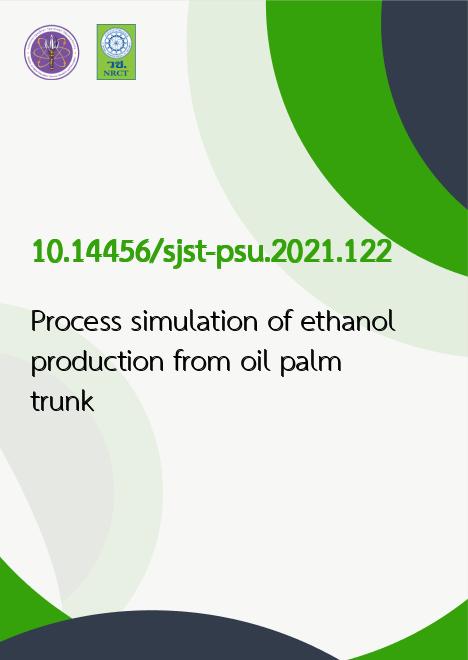
|
Process simulation of ethanol production from oil palm trunk |
|---|---|
| รหัสดีโอไอ | |
| Creator | 1. Opor Laosiriwut 2. Penjit Srinophakun 3. Pramuk Parakulsuksatid 4. Thongchai Rohitatisha Srinophakun |
| Title | Process simulation of ethanol production from oil palm trunk |
| Publisher | Research and Development Office, Prince of Songkla University |
| Publication Year | 2564 |
| Journal Title | Songklanakarin Journal of Science and Technology (SJST) |
| Journal Vol. | 43 |
| Journal No. | 4 |
| Page no. | 927-935 |
| Keyword | oil palm trunk, steam explosion, extractive distillation, Aspen Plus, ethanol simulation |
| URL Website | https://rdo.psu.ac.th/sjstweb/index.php |
| ISSN | 0125-3395 |
| Abstract | Oil palm trunk (OPT) is lignocellulosic biomass and renewable waste obtained from palm oil production, and it can beused to produce ethanol. In this study, the ethanol plant was analyzed using Aspen Plus software for process simulation andmodeling, based on of 60,000 kg of OPT, while the model inputs were based on data recently obtained in the laboratory. Variouspretreatments of OPT are used such as steam explosion, hot water, alkaline hydrogen peroxide, and simultaneous saccharificationand fermentation (SSF). All these pretreatments are used to increase the cellulose content and efficiency of getting fermentablesugars from cellulose for conversion to ethanol. The cellulose content was 73.96% by dry wt after treatment, from 38.67% in theoriginal OPT. For the SSF step in a laboratory, treated OPT was used to ferment ethanol for about 60 h, producing an ethanolyield of 0.469 g EtOH g-1cellulose. This information was used to simulate the SSF unit. Ethanol was purified by extractivedistillation using ethylene glycol as a solvent. The simulation of the distillation column comprised 15 stages, the distillate forfeeding had mass ratio 0.65, and the reflux mass ratio was 1.4, potentially producing 9,531 kg of ethanol. |
